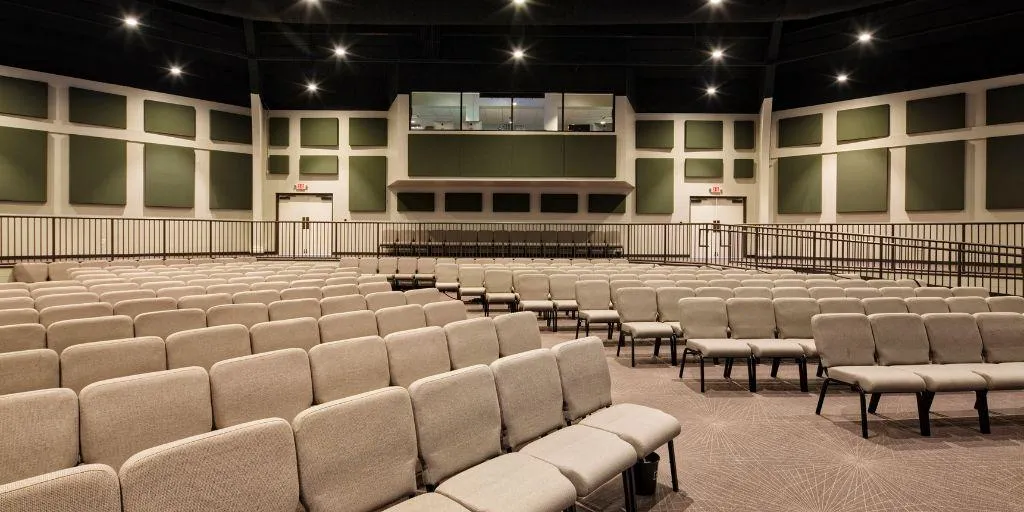Church Marketing & Management Blog
Learn How to Grow Your Church and Further Your Message

How to Turn the Decline of Religion in the U.S. into an Opportunity
Is religion dying? This question begs asking, what with the rapid and consistent decline of American membership in religious houses and groups, according to Gallup. For the first time in eight years, the numbers dropped below 50%, based on that same report. The decline of religion in the U.S. might seem alarming, but it is a learning opportunity for church leaders to adapt to the changing views of religion.
In this blog, you’ll learn how to identify those opportunities and utilize the best approach to make the most of them.
What Does Research Show about the Decline of Religion in the U.S.?
The face of religion in the U.S. is undeniably changing—it has been for decades. But what types of changes are actually taking place? Let’s take a closer look at what research studies have shown…
Religion Isn’t Always Transmitted From Parents to Children
According to Pew Research, there is a current phenomenon known as a generation “snowball” in the U.S. religious landscape. This trend has been going on since the 1990s, and it is only now that it has gained full momentum. The number of Christians who have retained their religious identity has gradually declined with each generation.
For instance, those who were raised by Christian parents in the 1990s have become adults now. However, not all of those continued to practice their religion. The population of religious nones continues to expand, with only 66% of thirty-somethings choosing to remain Christians.
The Average U.S. Christian Is 43
Another important statistic to note about the decline of religion in the U.S. is that the current population of Christians is growing older. The average age for a Christian in the U.S. is now 43.
Before the 90s, it was rare for someone, especially an adult in their 30s, to change religion. Nowadays, religious switching is a common phenomenon, especially among young adults.
When Christians hit the age of 15 to 29, they grapple with various issues surrounding their personal identity. Young adulthood is a time of major life changes, and many church experts believe this is the age that is critical for improving retention.
The impact of the internet on religion is one aspect that must be assessed fully by church leaders, especially since there are educational, political, and gender issues that young adults face, which impact their decisions on religion. Further, younger generations don’t approach religion the same way. They turn to online sources to get answers to faith-based questions.
Some Scholars Believe Secularization Is the Result of Less Insecurity
Increased security is another contributing factor to the decline of religion in the U.S. According to Religion’s Sudden Decline: What’s Causing, and What Comes Next? by Ronald F. Inglehart, the decline in religion is more common among secure people and countries.
On the flip side, high religiosity is evident among countries most vulnerable to income inequality and low life expectancy. Existential security—and its historical ties with religion—should be studied closely. It can reveal what previously drove people to join a church compared to what drives them today.
Why Your Church Should View This as an Opportunity
Although the recent pandemic resulted in a drop in church attendance, the decline of religion was already taking place before that. The reduced physical presence served to open church leaders’ eyes to an important truth: It isn’t enough to focus on physical attendance if you want to keep your church going.
It’s easy to feel discouraged by dwindling church attendance. However, the decline of religion in the U.S. isn’t an indication that leaders should close their doors for good. Instead, it’s an opportunity for leaders to adapt and devise new ways to market and promote services.
Religion isn’t going anywhere, but it does require a new approach. It’s simply a matter of...
Meeting potential members where they are
Tackling the problems people experience today
Demonstrating the value of your services and programs
Today, it’s crucial to shift your mindset and look at the religious decline as an opportunity for change. By considering emerging trends and finding a way to work with them, you can impact the future of your church.
How You Can Implement Changes for Growth

As touched on above, changes in the U.S. religious landscape can be troubling for church leaders like you. However, you must delve deep to see the opportunities for growth.
Here are some steps you can take to overcome the decline of religion in the U.S. and avoid bad habits that kill church growth...
Foster a Family-Friendly Atmosphere
The transmission of religion from parent to child is no longer as strong as it once was. Various factors contribute to this, such as a lack of religious commitment from the parent, the child choosing to explore their own religious beliefs, or the child opting not to have a religious identity at all.
Regardless of the reason, you can combat the decline of religion in the U.S. by fostering a family-friendly church. The reasons people come to church nowadays have changed from what they were a few decades ago. And it’s important to meet the needs of modern families.
Here are some ways you can cultivate a family-friendly atmosphere within your church:
Reach out to church members outside of your church. Focus on building a sense of community and take a genuine interest in those who are members.
Dedicate a time in your church service for children to encourage young families to bring their children into the service.
Diversify your ways of holding the service to include songs and music. Make it easier for everyone in the family to participate.
Host a meal for everyone in your church. You can do this once or twice a year. It upholds a sense of community and brings families together.
Offer online and offline Bible study resources so that parents have more flexible ways to educate their children about their faith.
Stop Trying to Push a Square Peg into a Round Hole
Churches need to meet younger generations where they are and deliver experiences that engage them instead of trying to keep things the way they have always been.
Attracting the youth to the Church is important if you want to address the decline of religion in the U.S. Young adults and millennials make up a huge portion of the population. Your ability to bring them in can encourage others to go back to church, especially those in their age group.
Get creative with ideas like these:
Provide multiple ways to give back to the community. Many young adults are all about making an impact on the world. The best way to do that is through their immediate community. Hosting events that give back to the community is a great way to get them involved and rekindle the spirit of the ministry within them.
Launch short-term missions that are led by the youth. Many youth members of the Church abandon their religion simply because they don’t want to be confined within the four walls of the building. You can send them on missions that allow them to meet other people, help others, and stay active.
Go digital (or hybrid) to target young people. Make your sermons available on your website or social media to reach young people and communicate your message. It would be best if you could set up an online community where they can engage.
Demonstrate ALL the Benefits of Your Church
The Church is more than just a place of worship. This is an important point to emphasize among your church members, especially the youth. You can showcase to them the benefits of being part of your church through methods beyond your worship service.
Here are some ways to do this:
Use your church as a platform for volunteerism. Host volunteer projects in the local community to encourage not just new members but also inactive members to engage.
Form social groups within your church, such as a group for the musically inclined members of your church to gather and form close ties with each other.
Take your church activities outside to reinforce the theological teaching that the Church is not about the place but rather the people.
Embrace Digitalization
During the pandemic, many churches turned to live streaming their worship services so that they could continue to reach their members. Post-pandemic, it’s a good idea to continue this practice, especially with the decline of religion in the U.S.
Streaming your church services offers expanded benefits, such as the ability to share your ministry beyond the walls of your church. It also allows your church members (and non-church members) to listen to your worship on demand (when you make those sermons available on social media or your church’s website).
Target a Niche
One of the reasons churches fail to bring in more members is that they have a generic voice. Choosing a niche and contextualizing is a much better approach in today’s landscape.
Identify a specific group of people that you want to target and craft your message accordingly. Contextualizing allows you to focus on what that specific group of people needs from the Church and serve it up to them. This is a simple and low-cost strategy to encourage more people to partake in your church’s mission.
Takeaway
The decline of religion in the U.S. and the rate at which it is happening might be alarming. However, your ability to see an opportunity in every challenge can be what saves your church and allows it to thrive.
Enlisting the help of experts to assist with creative ways to keep your church growing is one of the best investments you can make. Learn more about our church marketing services today!
Frequently Asked Questions
Q:
We already have software tools and don't want to lose that data by switching. What's the solution?
The data you collect is important, so you don’t want to lose it. It helps you stay connected to the people who look to you for guidance.
The BeyondSundays team would assess your current tech profile and recommend the best way to move your existing assets to BeyondSundays.
Q:
How does this integrate with my church app?
The BeyondSundays App has an API (Application Program Interface) that can connect with most other apps and software. Most apps are able to communicate seamlessly with BeyondSundays.
Q:
What kind of support does the BeyondSundays team offer my church?
BeyondSundays was built by a full-service marketing agency, dedicated to communicating His word and assisting the churches in their efforts to do so. Beyond the mechanics, we are equipped to assist in all facets of marketing and strategic planning. You can see a full list of our services here.
Q:
How is filled-out web form information funneled to BeyondSundays?
Your BeyondSundays app in-house webforms and landing pages can easily be installed on your existing website. From there the data is already within your BeyondSundays app. If you use your own webforms, the data will be transmitted via the API.
Get Our Free "Ultimate Guide to Church Marketing Tools & Tactics"
At BeyondSundays, we're more than just another app, software platform or tech tool. We're driven by a passion for helping churches, ministries and other Christ-centered nonprofits.
BeyondSundays
More
© Copyright 2025. BeyondSundays. All rights reserved.

